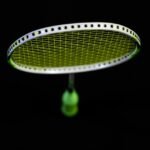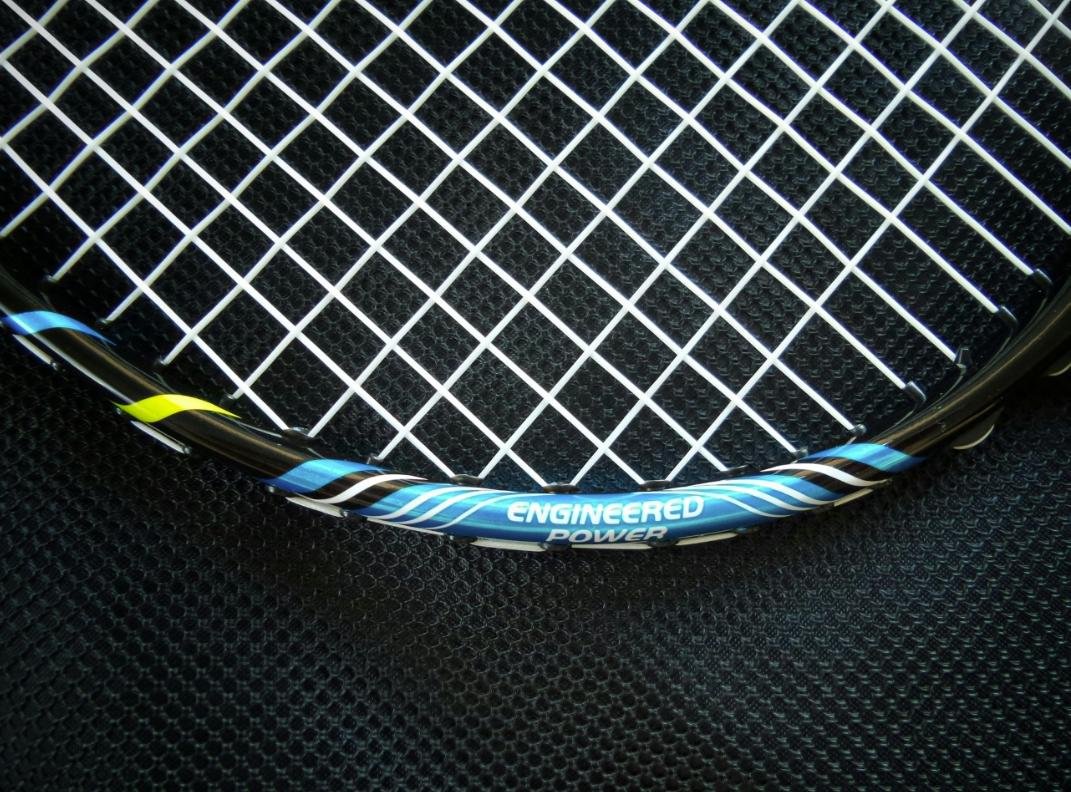Understanding Racquet Weight
Racquet weight is a critical factor that directly influences player performance on the tennis court. It is typically measured in two ways: unstrung and strung weight. The unstrung weight refers to the mass of the racquet without any strings, while the strung weight encompasses the mass of the racquet with the strings installed. This distinction is important because the added weight of the strings can affect the overall handling and feel of the racquet during play.
The weight of a racquet plays a significant role in determining swing speed and control. Lighter racquets often allow for quicker swings, making them suitable for players who rely on fast strokes and quick reflexes. These racquets are generally easier to maneuver, particularly at the net, where rapid changes in direction can be crucial. However, lighter racquets may sacrifice some stability and power, which is a consideration for players who prefer to hit with more force.
Conversely, heavier racquets provide increased stability and power, making them ideal for players who generate their own pace or play from the baseline. They can absorb the impact of higher velocity shots more effectively, offering greater control at the expense of swing speed. For some players, the initial time spent getting accustomed to a heavier racquet can result in enhanced performance over time, especially as their strength and technique improve.
Another important concept is weight distribution. A racquet’s balance—whether it is head-heavy, head-light, or evenly balanced—affects how it feels during play. A head-heavy racquet can generate more power but may be more challenging to maneuver, while a head-light model can enhance control and feel. Ultimately, understanding the nuances of racquet weight and balance allows players to make informed decisions tailored to their playing styles and preferences.
Types of Racquet Weights
When selecting a tennis racquet, understanding the various weight classes is essential for finding a racquet that complements your playing style. Tennis racquets can generally be categorized into three main weight classes: light, medium, and heavy. Each of these categories offers distinct advantages and disadvantages that can significantly influence a player’s performance on the court.
Light racquets typically weigh between 8 to 10 ounces. They are particularly advantageous for beginners and players who prefer a more agile playing style. The lower weight allows for quicker swings, enhancing maneuverability and reducing fatigue during extended play. However, the trade-off is often a reduced level of power and stability on impact, which may necessitate stronger strokes to achieve sufficient force.
Medium racquets weigh around 10 to 11.5 ounces, providing a balance between maneuverability and stability. This category is often favored by intermediate players who seek versatility in their game. Medium-weight racquets offer improved power generation without sacrificing too much control, making them suitable for a wide range of shot types and playing styles. Nevertheless, players may experience some difficulty with maneuverability when compared to lighter racquets.
Heavy racquets exceed 11.5 ounces, designed for advanced players who can effectively handle the added weight. The primary advantage of heavy racquets lies in their stability and power during ball contact, allowing for explosive shots and greater precision. However, the added mass can lead to quicker fatigue, particularly if the player lacks the physical conditioning to manage the rigors of a heavier racquet. As such, understanding your physical capabilities is crucial when considering the right weight category for your game.
Factors to Consider When Choosing a Weight
When selecting the appropriate weight for a tennis racquet, several critical factors must be taken into account to enhance both performance and comfort on the court. The first consideration is the player’s skill level. Beginners often benefit from lighter racquets, as they allow for greater maneuverability and easier handling. Conversely, more advanced players may prefer heavier racquets that provide added stability and power during play. Understanding one’s proficiency can guide the decision-making process effectively.
Another pivotal factor is the player’s playing style. Aggressive players who frequently hit powerful shots might favor a heavier racquet, which can improve control and depth on returns. In contrast, players who rely on quick reactions and net play may opt for a lighter model to facilitate swift maneuvering. This alignment between racquet weight and playing style is essential for optimizing performance and enjoyment during matches.
Physical condition plays a significant role as well. Players with past injuries or those lacking upper body strength should consider lighter options to prevent fatigue and injury. On the other hand, players in excellent physical condition may be able to wield heavier racquets without discomfort. Personal preferences, including grip size, the feel of the racquet in hand, and aesthetics, also contribute to the choice of weight. Some players may feel more comfortable with a particular weight based on their unique hand and arm dynamics.
Ultimately, assessing these factors—skill level, playing style, physical condition, and personal preferences—enables players to select a racquet weight that not only complements their game but also enhances their overall experience on the court. The combination of these considerations is vital in finding the optimal racquet weight for maximum performance and comfort.
The Impact of Weight on Performance
The weight of a tennis racquet significantly influences a player’s performance on the court, affecting key elements such as power, spin, control, and stability. Understanding this relationship can help players make informed decisions about which racquet suits their style of play best. Generally, heavier racquets provide increased stability, which may result in better control and precision during shots. This stability allows players to hit with more confidence, particularly when facing powerful opponents.
Conversely, lighter racquets tend to facilitate greater maneuverability, enabling players to generate faster swings and react quickly to opponents’ shots. This characteristic is often essential for players who rely on speed and agility to outmaneuver their competition. For example, professional players like Maria Sharapova and Roger Federer have exemplified the positional benefits of different racquet weights in their careers. Sharapova’s choice of a slightly heavier model has provided her with added stability during her aggressive baseline play, while Federer’s preference for a lighter racquet has allowed him to execute swift volleys with remarkable precision.
In terms of power, a heavier racquet can enhance shot depth and velocity, as it often translates to a more forceful contact with the ball. However, this power comes with a trade-off; heavier racquets can also lead to fatigue over time, particularly if a player lacks the necessary physical strength to wield them effectively. On the other hand, lighter racquets may foster increased spin, as they allow for quicker wrist movements and a more versatile playing style.
Ultimately, the choice of racquet weight is a personal one, dependent on each player’s unique playing style and physical capabilities. By examining the performances and preferences of professional athletes, players can glean valuable insights that guide their choice of the best weight tennis racquet for optimal performance.
Comparing Light, Medium, and Heavy Racquets
When selecting a tennis racquet, understanding the distinctions between light, medium, and heavy options is crucial for tailoring performance to an individual’s playing style. Each category presents unique advantages and drawbacks that cater to different player needs and skill levels.
Light racquets, typically weighing less than 9.5 ounces, are favored by beginners and players who prioritize maneuverability. These racquets offer enhanced speed and ease of swing, allowing for quicker reactions at the net. A major advantage is their accessibility for players who may struggle with upper body strength, which can lead to improved accuracy and consistency. However, a downside is that light racquets may lack stability on impact, potentially resulting in a less powerful shot. Popular choices in this category include the Wilson Blade 98L and the Babolat Pure Drive Lite, both of which offer great maneuverability without significant weight reliance.
Medium racquets, ranging from 9.5 to 10.5 ounces, strike a balance between control and power. These options suit intermediate players who seek a more versatile racquet to enhance their game. The added weight provides better stability during shots, aiding in the generation of power without sacrificing too much speed. Examples of medium racquets include the Head Graphene 360 Speed MP and the Yonex Vcore 100, both of which cater well to aggressive baseline play while maintaining solid maneuverability.
Heavy racquets, typically exceeding 10.5 ounces, appeal to advanced players who favor control and power. These racquets deliver significant stability, allowing players to hit through the ball for more penetrating shots. They excel in allowing for deeper strikes and can be beneficial for those with proper technique. However, the increased weight may pose a challenge for players with less strength. Models such as the Prince Textreme Tour 100P and the Wilson Pro Staff RF97 Autograph exemplify this category, embodying control and precision revered by professional-level players.
Common Misconceptions About Racquet Weight
When choosing a tennis racquet, many players are often misled by prevalent misconceptions surrounding racquet weight. One of the most common myths is that heavier racquets inherently provide more power. While it’s true that mass can contribute to a racquet’s stability and enable players to hit the ball with greater force, it is not the sole factor influencing power. A heavier racquet can also be more strenuous to handle, leading to fatigue during extended play. Factors such as string tension and swing speed play critical roles in generating power, thus placing a heavier racquet at a disadvantage for some players.
Another prevalent belief is that lighter racquets are universally preferable for beginners. While lightweight options are indeed easier to maneuver, particularly for new players still developing their technique, they may not necessarily offer the best support for learning effective shots. A racquet that is too light can lead to a lack of stability and control, making it difficult for novices to strike the ball effectively. Thus, the concept of “light is better” does not consider the player’s unique strengths and requirements.
Moreover, some players believe that one type of racquet weight suits all styles of play. Each player’s body mechanics and playing style can significantly influence their preferred racquet weight. For example, aggressive baseliners may benefit from a heavier racquet to absorb the power of their shots, while serve-and-volley players might prefer a lighter option for quick reactions at the net. Understanding that individual preferences trump general assumptions is crucial for players at every level.
By demystifying these misconceptions about racquet weight, players can make more informed decisions aligning their equipment with their skill level and playing style. In understanding that factors beyond weight play a significant role in performance, players are better equipped to choose racquets that enhance their game rather than hinder it.
Testing Racquets: Hands-On Experience
When it comes to choosing the best weight tennis racquet for your game, engaging in hands-on testing is crucial. By directly experiencing how a racquet performs, you can better assess its suitability for your playing style. Start by visiting local sporting goods stores or tennis specialty shops, which often provide demo programs allowing you to rent or borrow racquets. This practical approach ensures you can evaluate different models before making a commitment.
During your testing period, pay attention to various factors that can significantly influence your performance. Firstly, consider the weight of the racquet. A heavier racquet can provide more stability and power, but it may also demand greater physical effort. Conversely, a lighter racquet offers enhanced maneuverability and faster swings, which can be advantageous for quick reactions at the net. Make sure to try racquets with varying weights to see which feels most comfortable during prolonged use.
Next, evaluate the grip size. An appropriate grip allows for better control and wrist movement, essential for executing accurate shots. While testing the racquet, ensure that you can hold it comfortably without straining. If unsure, consult with a professional at the store, as they can provide valuable insights tailored to your hand size and grip preference.
Additionally, observe how the racquet interacts with the ball. Focus on the sensations while serving, volleying, and returning shots. Evaluate factors such as vibration, sound, and overall responsiveness. A good racquet should feel like an extension of your arm, enhancing your capabilities rather than hindering them. Remember to take notes during each trial session, as this will help you compare your experiences and ultimately choose the racquet that best matches your personal playing style.
Recommendation: Best Weight Racquets for Various Styles
Selecting the appropriate weight of a tennis racquet is crucial for optimizing performance according to individual playing styles. This section aims to guide players in choosing the best weight racquets tailored to different game strategies, including baseline, net, and all-court players.
For baseline players who typically engage in long rallies from the back of the court, a racquet that offers better stability and control is essential. A heavier racquet, generally weighing between 10.5 to 11.5 ounces, can provide the necessary power and precision for deep shots. The Babolat Pure Drive stands out as a recommended option. Its balanced weight allows for potent groundstrokes while minimizing vibration, thus enhancing comfort during extended matches.
Net players, often relying on quick reflexes and volleys, benefit from a lighter racquet that enables swift maneuverability. Racquets in the 9.5 to 10.5-ounce range are particularly advantageous for this style. The Wilson Blade 98 is an excellent choice, offering a blend of lightness and control, which allows net players to execute rapid volleying with heightened precision. Its weight distribution ensures that the player can pivot effectively, improving their game at the net.
All-court players, who consistently transition between the baseline and the net, require a versatile racquet. A weight around 10 to 11 ounces will provide a balance of control and maneuverability. The Head Graphene 360+ Speed MP is tailored for this versatile playing style, delivering exceptional spin and reach without compromising on power. This racquet is designed to adapt to the varying demands of an all-court game, making it a reliable option for multifaceted players.
Ultimately, choosing the right weight racquet can significantly enhance a player’s performance by aligning the racquet’s specifications with their unique playing style.
Conclusion: Finding Your Ideal Weight
In the journey of selecting the best weight tennis racquet for your game, it is essential to reflect on the insights provided throughout this discussion. Ultimately, the right racquet should complement your playing style, skill level, and physical attributes to enhance your performance on the court. Understanding the impact of weight on racquet maneuverability, power, and control will significantly empower tennis players at all levels.
The selection of a tennis racquet’s weight largely depends on personal preferences and playing conditions. Heavier racquets, while providing more stability and control, may not be suitable for everyone, especially beginners or those who may have physical limitations. On the other hand, lighter racquets can offer enhanced maneuverability, allowing for quicker swings and easier adjustments during gameplay. As a player, one should consider the match conditions and individual strengths, such as fitness level and swing technique, when choosing the ideal weight for a tennis racquet.
Incorporating these considerations into your decision-making process can significantly alter your overall playing experience. Players are encouraged to experiment with different racquet weights through demo programs offered by various brands to identify what feels most comfortable. Additionally, consulting with a knowledgeable tennis professional can provide deeper insights and recommendations based on one’s specific needs. Remember, selecting the right racquet is not merely a matter of personal preference; it is an integral part of improving your game and achieving your tennis aspirations.
By synthesizing the information laid out in this discussion, players can navigate their options more confidently. The right weight tennis racquet can transform your gameplay, providing a stronger foundation for developing skills and enjoying every match. It is recommended to remain open-minded, willing to explore various options until the preferred racquet is found.






